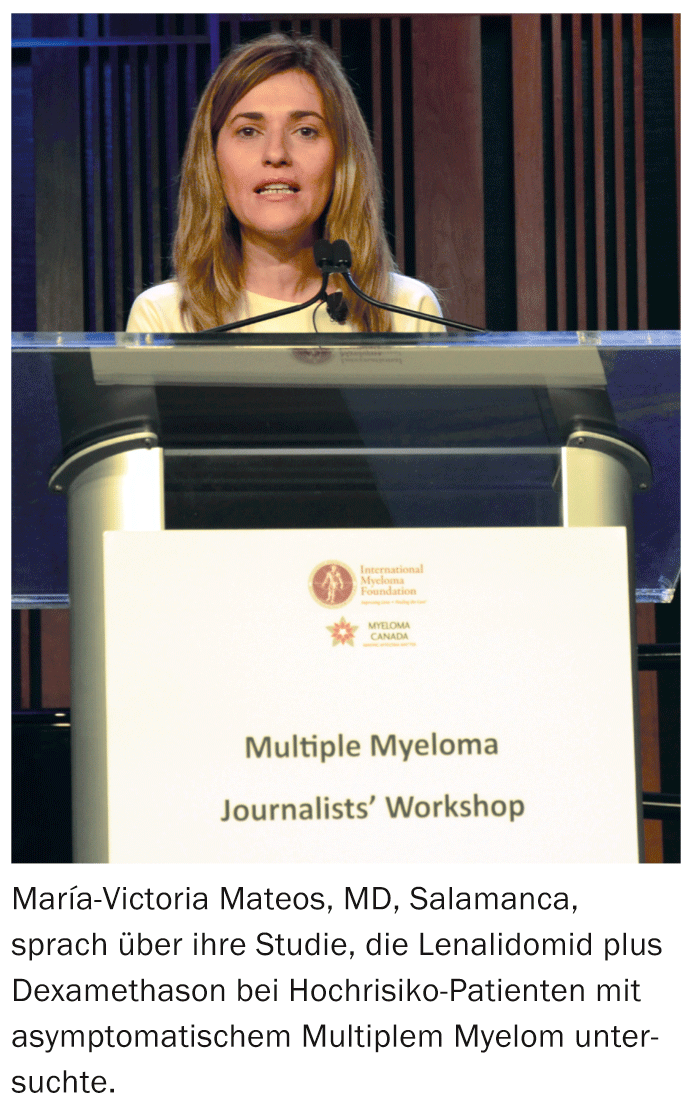At a media workshop during the ASH Congress in New Orleans, some key points of myeloma research were presented. They also discussed what these innovations mean for patients and used various biographies of long-term survivors to show the possibilities offered by current myeloma therapy.
(ag) Among the topics discussed at the Multiple Myeloma Media Workshop in New Orleans were the phase III results of the FIRST trial [1], which was presented at ASH at the same time. This study concludes that continuous treatment until disease progression is better than stopping therapy after a fixed treatment cycle. Furthermore, the combination of lenalidomide and low-dose dexamethasone proved superior to standard therapy with melphalan, prednisone, and thalidomide.
Furthermore, they discussed the results of a study that found that early treatment of patients with asymptomatic high-risk (“smoldering”) myeloma can delay progression to active disease and improve overall survival. This means that in some cases, starting therapy even before any symptoms appear makes sense [2].
In addition, the newly approved drugs in the USA, pomalidomide (also EMA-approved) and carfilzomib, were both important topics at the ASH Congress.

Marathon runner and documentary filmmaker
Several long-term survivors were available for interviews during the workshop. An impressive example of endurance and willpower was provided by a 72-year-old marathon runner who started running at the same time as his multiple myeloma diagnosis in 2003. Since then, he has completed 78 marathons, most recently one in Memphis. The oral pomalidomide treatment he is currently on allows him to continue traveling around the country for it.
A documentary filmmaker who has been capturing the lives of dolphins for more than 30 years, even after starting his myeloma therapy in 2003 (with thalidomide), has since been treated with lenalidomide and is now on bortezomib therapy. If nothing else, this demonstrates the importance of having access to different myeloma treatment medications for optimal individual outcome.
In contrast, another man who was diagnosed with multiple myeloma in 2000 has been taking the same drug (lenalidomide) for eight years, demonstrating the role of continuous treatment. His disease has been stable since that time, after previously trying several other therapies and originally expecting a survival prognosis of three to five years.
Source: Multiple Myeloma Media Workshop, December 8, 2013, New Orleans.
Literature:
- Facon T, et al: Initial Phase 3 Results Of The First (Frontline Investigation Of Lenalidomide + Dexamethasone Versus Standard Thalidomide) Trial (MM-020/IFM 07 01) In Newly Diagnosed Multiple Myeloma (NDMM) Patients (Pts) Ineligible For Stem Cell Transplantation (SCT). ASH Abstract #2.
- Mateos MV, et al: Lenalidomide plus dexamethasone for high-risk smoldering multiple myeloma. N Engl J Med 2013; 369: 438-447.
InFo Oncology & Hematology 2014; 2(2): 2.











